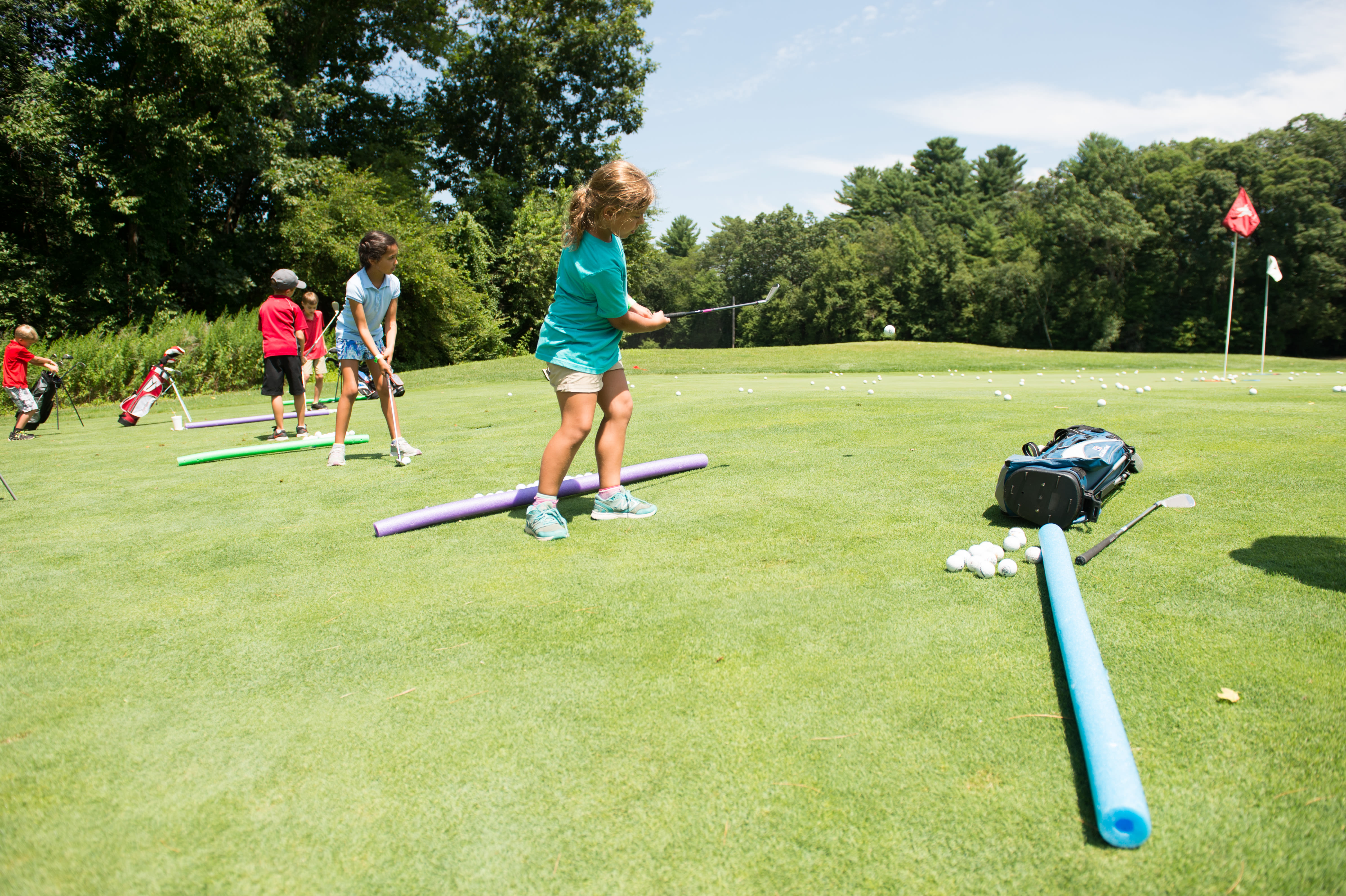From the PGA
American Development Model: Active Start
Published on

Active Start
Age (Please note: Ages are guidelines, not restrictions)
0 to 6
Primary focus: Be active. Children at this age need unstructured physical activity for at least 60 minutes a day. Toddlers and preschoolers shouldn’t be sedentary for more than one hour at a time, unless they’re sleeping.
Competition level: None
What the coach recommends: Barbara Blanchar runs a Little Spikes program at WingHaven Country Club in O'Fallon, Missouri. One of the hardest things for parents, Blanchar said, is to simply let their kids have fun during a summer session. Mom and dad often want their child to hold the club properly from the start. Blanchar doesn’t care if they’re doing it wrong. It doesn’t have to be perfect. But it does have to be fun.
One of Blanchar’s Little Spikes stations involves hitting floating balls into the swimming pool. She puts a blowup shark in the water as a target. Sometimes they’re on the lawn tossing golf balls rather than hitting them. Sometimes they’re throwing water balloons into the sky (or at dad).
Ice cream always follows.
Blanchar’s activities are designed to help children develop basic movement skills like the ability to run, walk, jump and throw.
Coach says: “I think the hardest thing for me is that (golf coaches) see the value of multiple sports. I worry that baseball and soccer players are not doing that. Hopefully the parents can understand the importance of playing multiple sports. I want them at golf, but at a certain age I don’t need them year-round. Get that athletic ability and that athleticism so they can play golf better as they grow.”
0 to 6
Primary focus: Be active. Children at this age need unstructured physical activity for at least 60 minutes a day. Toddlers and preschoolers shouldn’t be sedentary for more than one hour at a time, unless they’re sleeping.
Competition level: None
What the coach recommends: Barbara Blanchar runs a Little Spikes program at WingHaven Country Club in O'Fallon, Missouri. One of the hardest things for parents, Blanchar said, is to simply let their kids have fun during a summer session. Mom and dad often want their child to hold the club properly from the start. Blanchar doesn’t care if they’re doing it wrong. It doesn’t have to be perfect. But it does have to be fun.
One of Blanchar’s Little Spikes stations involves hitting floating balls into the swimming pool. She puts a blowup shark in the water as a target. Sometimes they’re on the lawn tossing golf balls rather than hitting them. Sometimes they’re throwing water balloons into the sky (or at dad).
Ice cream always follows.
Blanchar’s activities are designed to help children develop basic movement skills like the ability to run, walk, jump and throw.
Coach says: “I think the hardest thing for me is that (golf coaches) see the value of multiple sports. I worry that baseball and soccer players are not doing that. Hopefully the parents can understand the importance of playing multiple sports. I want them at golf, but at a certain age I don’t need them year-round. Get that athletic ability and that athleticism so they can play golf better as they grow.”
Athletic Skills: Running, jumping, hopping, twisting, turning, stopping, catching a ball with two hands.
Technical skills: Experiment with the club and ball! Remember, kids don't learn like adults.
Psychological Development: Try new challenges! Giving effort and following simple instructions at this stage is the goal.
Social Development: Sharing, saying thank you, being with friends. Parents are central for praise and approval of all they do.
Practice: No formal guidelines. Positive experience based on child's interest level is the key.
Competition: NONE! They are too young.
Equipment: Safety is first and foremost at this stage, not the equipment.
Where to play: Anywhere equivalent with ability (golf course, park, mini putt, backyard, living room.)
